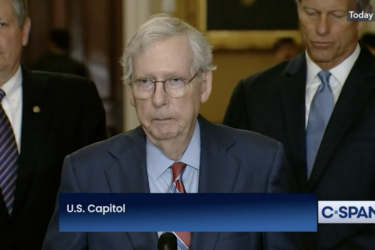
Hospice use is a common indicator of quality end-of-life care. The timing of hospice enrollment is an important component of that care, and a recent study finds wide variations among states.
Researchers from Yale University compared 2011 hospice use data on a state-by-state basis of 660,000 Medicare patients during the last six months of their lives. They identified several key trends among states in the rates of very short or very long hospice stays (reflecting late or early enrollment) and of patients leaving hospice before their deaths.
The goal was to identify less-optimal patterns of use and improve overall hospice care. Hospice provisions were recently added to the Improving Medicare Post-Acute Care Transformation Act of 2014 (IMPACT Act), which as means to eventually improve outcomes, mandates reporting of standardized patient assessment data for quality measures, resource use and care coordination.
Nationally, 47.1 percent of the beneficiaries used hospice care during this period. Rates varied across states from 20.3 percent in Alaska to 60.8 percent in Utah. Nearly half of all hospice users (49.7 percent) had potentially concerning patterns of use; either using hospice for longer than 180 days or less than seven days or were disenrolled prior to death (9.9 percent, 32.4 percent, and 8.5 percent, respectively). These utilization patterns raise concerns because patients and their families might not be receiving the support they need when they need it.
The timing of hospice enrollment also has economic implications. Compared with no hospice use, hospice enrollment of five to eight weeks duration produced the greatest cost savings; there was no cost savings for very short or very long hospice enrollment.
The analysis found that “the proportion of hospice users with potentially concerning patterns of hospice use (very short, very long, or disenrollment) also varied distinctly across states, ranging from 38.8 percent in Vermont to 56 percent in Rhode Island.”
Oregon was in the highest quartile of hospice use as well as in the lowest quartile of potentially concerning pattern of hospice use. Researchers said this was possibly due to the state’s Death with Dignity Act, “which reflects more open conversation and careful evaluation of end-of-life options, more appropriate palliative care training of physicians, and more efforts to reduce barriers to access to hospice care.” This has resulted in more hospice referrals and reduced potentially concerning patterns of hospice use in that state.
The study concluded that state-level variation in the prevalence of potentially concerning patterns of hospice use was “substantial,” and that hospice use alone as an indicator of quality of end-of-life care may mask other issues that require attention.
The study also found that those more likely to use hospice care were:
- Older, white and female.
- Adults residing in metropolitan areas, in areas with higher income, and in areas with higher education.
- Medicare beneficiaries with dementia, kidney disease, depression, stroke or cancer.
- Patients in areas that had a higher HMO penetration rate, a greater number of hospices per 1,000 people and more physicians per 1,000 people aged 65 years or older.
However, access to hospital-based palliative care was not associated with use of hospice.
For reporters covering hospice, palliative care and end-of-life care issues, be sure to check out these resources:
- Why is it so hard to discuss end-of-life care?
- How the discussion on dying has changed over 40 years: A conversation with Nancy Berlinger
- Reporting on end-of-life care? Start here.
- This tip sheet by author and member Rosemary Gibson on reporting on hospice and palliative care
- This presentation by Health Journalism 2013 speaker Ellen Goodman, co-founder and director, The Conversation Project









